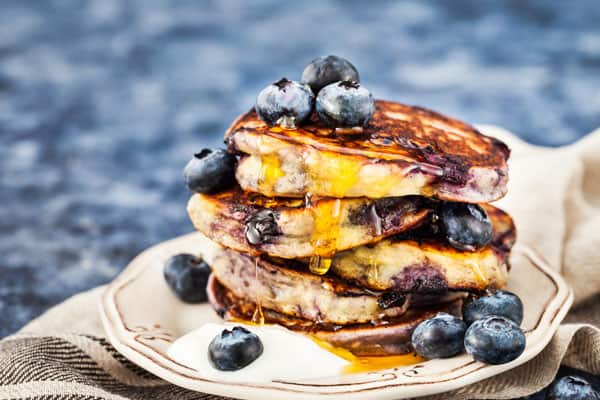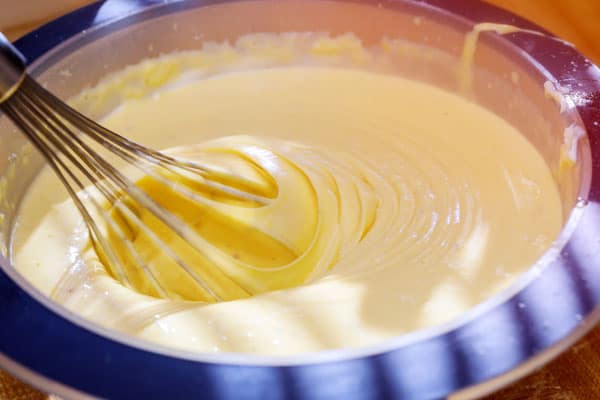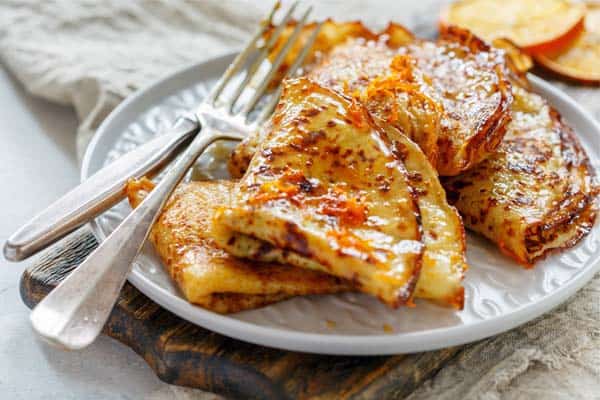To celebrate Shrove Tuesday, we are going to share some of our favourite pancake toppings for you to try, but first we thought we’d better explain a bit more about where this humble treat comes from, and why it is so popular world-wide.
If you don’t know what a pancake is, you may also have been living under a rock! But just to clear things up, a pancake is a thin, flat cake which is usually round. Pancakes are typically made from a batter consisting of eggs, flour, milk and sometimes butter. Pancakes might just be one of the most versatile snacks around. They can be prepared to be sweet or savoury, and filled or topped with a variety of delicious things!
Pancakes around the world
Pancakes are different depending on which country you visit. In European countries and the UK, they mostly unleavened. Unleavened means that they don’t have any raising agent in them, resulting in a thin, crepe-like texture. In places like the USA and Canada, pancakes do frequently have a raising agent (such as baking powder) added to them.

Shrove Tuesday
Pancakes are traditionally eaten on Shrove Tuesday. So, what is Shrove Tuesday?
Shrove Tuesday is the day that immediately proceeds Ash Wednesday, which according to Christian tradition is the first day of Lent. Because Lent is so important in the Christian faith, it marks the start of the liturgical calendar, therefore making Shrove Tuesday the final day of the ‘season’. Lent is a time of sacrifice and penance for Christians. Shrove Tuesday was historically seen as the last chance for Christians to enjoy fatty or luxurious foods, using them up before fasting throughout Lent.
In France, Shrove Tuesday is known as Mardi Gras. But don’t get confused, this festival is a little different from the one in Australia, although it is a big party. Mardi Gras translated means ‘Fat Tuesday’ – referring to the foods consumed on this day of excess and feasting.
Why do we eat Pancakes on Shrove Tuesday?
Pancakes were eaten on Shrove Tuesday because they contained rich ingredients like eggs, butter and milk, which needed to be used up prior to the start of Lent.
How to make pancakes
Ingredients
1¾ cups milk
2 eggs
1 tsp vanilla essence
2 cups self-raising flour
Butter for frying
Optional: for sweet pancakes, add 1/3 cup caster sugar (add to the flour mixture).
Method
Step 1 In a small bowl, whisk together eggs, milk and vanilla.
Step 2 Sift flour into a large bowl (add sugar if using). Make a well in the centre.
Step 3 Pour wet ingredients into well.
Step 4 Whisk gently until just combined. Set aside for 5 minutes.

Step 5 Heat a large non-stick frying pan over medium heat.
Step 6 Grease pan with butter or spray lightly with cooking oil.
Step 7 Using a measuring cup, scoop up 1/4 cup per pancake and pour batter into frying pan.

Step 8 Cook for 2 minutes or until bubbles appear on the surface.
Step 9 Turn and cook for a further 1-2 minutes or until cooked through.
Step 10 Transfer to a plate and cover loosely with foil to keep warm. Repeat until complete.
Pancake toppings to try
We put together a list of some pancake toppings you could try this weekend. There are so many winning combinations that can take your pancakes next level, whether you prefer them sweet or savoury.
Here are some of our suggested toppings:
- Sliced banana, bacon and maple syrup.
- Apple and Cinnamon with vanilla bean ice cream.
- A simple squeeze of lemon juice and a sprinkle of sugar (a classic combination).
- Squash, goat’s cheese and rosemary – Get the recipe.
- Sliced banana and Nutella with a sprinkle of crushed hazelnuts.

- Mixed seasonal berries, a dollop of Greek yoghurt, and a dash of cinnamon.
- Crepes Suzette – a traditional French recipe where the pancakes are soaked in a syrup consisting of Grand Marnier, orange juice and sugar. Get the recipe.

- Sliced banana and peanut butter with a sprinkle of grated chocolate.
- Tiramisu – a concoction of coffee, mascarpone cheese and chocolate. Get the recipe.
That concludes our list of suggested pancake toppings
Why not give them a go this weekend?

